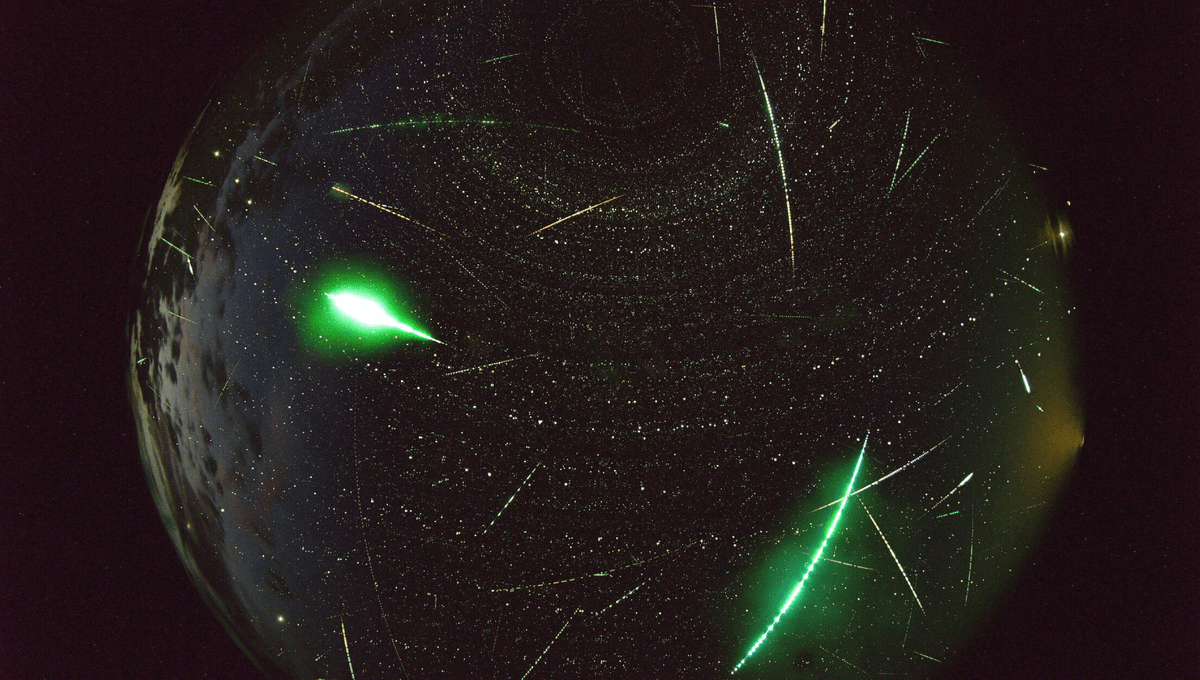
The type of meteorites that could have been crucial to the origins of life are very rare, but the asteroids they come from are common. Astronomers have long had an explanation for this paradox, but couldn’t prove it. New research shows that explanation is only half the answer, with exposure to the Sun providing the rest.
Carbonaceous chondrite meteorites are rich in water and amino acids, the building blocks of life. With both expected to have been wiped from the surface of the Earth during the period when it was a magma ocean, the delivery of each in these meteorites has been considered likely to be key to us being here.
However, carbonaceous meteorites have been estimated to make up around 5 percent of meteorites, a limited supply for something so crucial. That rarity frustrates teams eager to study them, which is why the best specimens are so prized. However, surveys of the asteroid belt and inner Solar System have shown that the asteroids from which such meteorites come, including Bennu and Ryugu, are common.
Most meteorites come from families that can be matched to asteroids that moved out of the main belt some time ago and ventured into the inner Solar System. Models of these migrations suggest 50 percent of the objects hitting the top of Earth’s atmosphere should be carbon-rich
The obvious explanation is that the carbon-rich objects are weaker than other meteor types, and more likely to burn up in the atmosphere. Still, it is a big drop from 50 percent to 5. Dr Hadrien Devillepoix of Curtin University is part of a team that set out to explore the question. They used a sample of 7,982 meteorites, and data from cameras observing almost 8,000 objects hitting the atmosphere, particularly in deserts, to see what was going on.
The team found that carbonaceous meteorites are even rarer than usually estimated, just 4 percent of the sample. The asteroids from which they come are more common at the top of the atmosphere, but not as much as our asteroid surveys suggest. The discrepancy is explained by the fact that even before they have hit the atmosphere, carbonaceous asteroids are more likely to have been broken up into pieces so small they don’t cause a fireball, let alone make it to ground.
“We’ve long suspected weak, carbonaceous material doesn’t survive atmospheric entry,” Devillepoix said in a statement. “What this research shows is many of these meteoroids don’t even make it that far: they break apart from being heated repeatedly as they pass close to the Sun.”
The team reconstructed the orbits of the objects hitting the atmosphere based on their angles of impact. They realised there was a shortage of medium-sized carbonaceous objects whose orbits would have taken them close to the Sun. Meanwhile other asteroid types could stand the heat of the same locations much better. The team attribute carbonaceous objects’ vulnerability to heat exposure to the presence of volatiles (materials that easily turn to gas). Carbonaceous asteroids may survive a single passage relatively close to the Sun, but repeated exposure, even at distances similar to that of Venus, wears them down.
The Sun’s heat and the Earth’s atmosphere create a double filter, making it quite a feat for any carbon-rich objects to make it to ground at all.
That explains why there is so much excitement when a fresh carbonaceous chondrite is found. “Carbon-rich meteorites are some of the most chemically primitive materials we can study — they contain water, organic molecules and even amino acids,” said Dr Patrick Shober of the Paris Observatory.
Devillepoix told IFLScience the findings may not have much implication in terms of meteorites’ capacity to seed life. Devillepoix noted the remains of the asteroids continue to orbit after the Sun has broken them up, and many still hit the Earth’s atmosphere as dust. Any water they carry will be absorbed in the atmosphere and eventually fall as rain. “It doesn’t matter if it is a large object or broken up in terms of water transport,” Devillepoix said. On the other hand, he is not sure whether amino acids would survive encounters when delivered in that form.
Orbit tracing also revealed that asteroids that had been tidally disrupted by passing close to a planet were particularly weak, but Devillepoix told IFLScience the team still doesn’t understand why.
The researchers were alerted to the solar filter by the velocities with which objects hit the atmosphere. It’s long been assumed that high velocity increases the chance an object will burn up, rather than making it to ground, just as the Apollo 13 crew needed to avoid hitting the atmosphere at too steep an angle. The team was surprised to discover that objects that dropped meteorites averaged slightly greater speeds than those that didn’t. As Devillepoix explained to IFLScience, “Things that get closer to the Sun will be more likely to impact Earth at higher velocity.” With Sun-grazing having already weeded out the weaker asteroids, those that have survived such orbits are also more likely to get through the atmosphere.
Devillepoix added there could be implications from this work for Planetary Defense. Carbonaceous asteroids are much darker than others, making it likely there are more of them lurking undetected, particularly close to the Sun where they are hard to see. Understanding their frequency could help us calculate risk.
The research is open access in Nature Astronomy.
Source Link: Scientists May Finally Have Answered Why The Most Important Meteorites Are So Rare